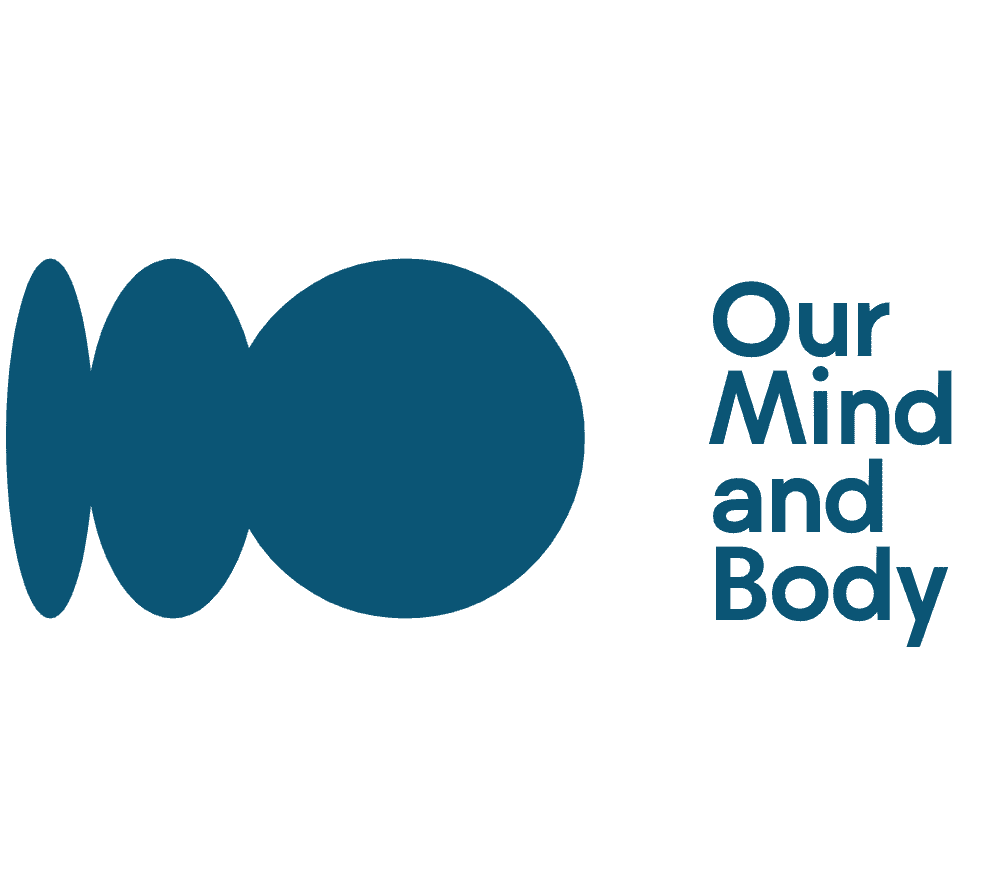Personal Growth
Unlocking the Power of Dopamine: How It Impacts Your Mental Health and Happiness

Have you ever heard of dopamine? It is a potent neurotransmitter, a chemical messenger that is crucial in the brain’s reward system. It is not just a hormone or a feeling, dopamine is truly transformative! It plays a key role in regulating our moods, emotions, and behaviors; it provides us with the energy we need to tackle the day; it aids in memory formation, decision-making, and concentration; and most importantly, it helps maintain balance in our body’s chemistry.
Dopamine works as part of a larger network of hormones and chemicals in the brain. When released into the body at appropriate levels, dopamine can bring about feelings of happiness, pleasure and contentment. When too little dopamine is produced or when there is an imbalance between other hormones such as serotonin or cortisol, this can lead to symptoms like depression, anxiety or difficulty focusing.
Understanding how dopamine impacts our lives can be incredibly valuable for maintaining good mental health. We will explore this further by looking at some of the amazing benefits associated with releasing dopamine naturally through exercise.
Benefits Of Dopamine Release
We all want to feel better, both mentally and physically. Luckily, one of the most powerful tools at our disposal is dopamine release. It has a variety of benefits that can help us cope with life’s challenges in an effective way.
When we release dopamine, it helps regulate our emotions and improves our mental health. We become more productive and creative, while reducing stress levels as well. This means we’re better equipped to handle difficult situations without feeling overwhelmed or anxious. Plus, having higher levels of dopamine can make us more resilient when facing tough times head-on.
Dopamine also gives us a sense of satisfaction when tasks are completed successfully, which helps create a positive feedback loop for motivation and productivity. Additionally, this neurotransmitter plays an important role in maintaining emotional balance by providing calming effects during times of distress or anxiety. By using coping strategies such as deep breathing exercises or mindful meditation to increase dopamine levels, we can gain greater control over our emotions and reactions to challenging situations.
The key takeaway here is that understanding how to tap into the power of dopamine can give us valuable insights on how to effectively manage stress and improve overall mental health outcomes. With these tangible benefits in mind, let’s explore further how exercise impacts dopamine levels…
Impact Of Exercise On Dopamine Levels
Exercising can be a powerful way to boost mental health by releasing dopamine, the chemical in our brain that helps us feel good. Research shows that even short bouts of exercise can have an immediate impact on dopamine levels and help relieve stress. So if you’re feeling down or overwhelmed with life’s challenges, it’s time to hit the gym!
Studies indicate that different types of exercise may affect dopamine differently. For example, running stimulates more of an intense release than activities like yoga. This means your workout routine is important when trying to tap into this natural mood-booster. Incorporating both aerobic exercises as well as strength training into your regimen can give you the best results for increasing your dopamine levels.
It’s also helpful to remember that consistency matters when it comes to exercising for better mental health. Aiming for around 30 minutes of physical activity each day will not only help increase dopamine but also reduce cortisol—the hormone associated with stress—in the body. With regular practice, you’ll start to notice positive changes in how you cope with life’s challenges and begin to experience increased energy and improved focus throughout the day.
The benefits of making exercise part of our daily lives are undeniable; from improving overall wellbeing to helping build resilience against tough times ahead. Taking just a few moments out of every day dedicated towards movement goes a long way in providing relief from any blues we might face due to life’s hardships – so make sure you get up and move today!
Benefits Of Exercise For Mental Health
Exercising can be a great way to boost your mental health. It has been proven to have positive effects on both our physical and emotional well-being, with numerous studies showing that regular exercise can help improve our overall moods and emotions. Not only does it promote better physical fitness, but it also helps support an improved sense of mental stability and emotional stability.
When we exercise, the body releases endorphins which provide us with a feeling of euphoria. This not only supports our mental health benefits, but it also encourages us to keep going in order to maintain this state of wellbeing. Additionally, exercising is known for its ability to reduce stress levels as it helps lower cortisol levels in the body. Cortisol is responsible for inducing feelings such as anxiety or restlessness, so by reducing these hormones through exercise our bodies become more relaxed and at ease throughout the day.
Finally, regular physical activity has been linked to higher levels of dopamine production in the brain – dopamine being one of the main neurotransmitters associated with motivation and pleasure. By releasing these chemicals into our systems through exercise, we are able to feel more energized and motivated while simultaneously reaping all the other mental health benefits mentioned above. Going forward, let’s look at how we can further increase dopamine release through exercise!
How To Increase Dopamine Release Through Exercise
The power of physical activity is undeniable. Imagine a river that flows steadily, carrying with it an abundance of life-giving energy. That’s what exercise can do for your dopamine levels—it can give you the boost you need to combat depression and anxiety while improving overall mental health.
Exercise releases endorphins, which are natural chemicals in the brain associated with happiness. It also helps increase production of serotonin, another neurotransmitter responsible for regulating moods as well as sleep and appetite cycle. But perhaps most importantly, it increases dopamine release—the neurotransmitter linked to motivation and reward processing. When we engage in physical activities, our brains get flooded with dopamine, leaving us feeling energized and more able to cope life’s challenges.
By incorporating 30 minutes of aerobic exercise into your daily routine, such as running or biking, you can reduce stress hormones like cortisol while simultaneously increasing feel-good hormones like serotonin and endorphins. Going out for a walk and breathing in fresh air can help clear your mind so that you can focus on positive solutions instead of ruminating on negative thoughts caused by too much cortisol in the body. Lastly, engaging in strength training exercises will not only make you stronger physically but also mentally; this type of exercise has been shown to increase concentration levels among people suffering from ADHD symptoms due to increased dopamine production.
With regular exercise comes improved mental wellbeing through higher dopamine levels leading to better coping skills when faced with difficult situations. So take some time each day to tap into that river of energy flowing within you and experience its ability to bring forth resilience during challenging times.
Tips For Incorporating Exercise Into Daily Life
Exercise is an important part of our daily lives, as it helps us to cope with life’s challenges. It can be a great way to banish the blues and get your daily dose of dopamine. However, many people find it difficult to incorporate exercise into their day-to-day lives. Here are some tips for making physical activity a regular part of your routine:
First, set realistic goals for yourself when creating your daily exercise plan. Choose activities that you enjoy doing and that fit within your lifestyle – this will make them easier to stick with in the long run. You may also want to consider joining a gym or fitness class if you need extra motivation.
Second, aim for consistency in order to stay active on a regular basis. This means setting aside time each day (even just 10 minutes!) for some form of physical activity. Start small and gradually increase the length and intensity of your workouts over time in order to avoid burnout.
Finally, remember that exercise doesn’t have to be boring! There are plenty of fun ways to keep yourself moving such as dancing, playing sports or going on walks outdoors. Find something that works best for you and don’t forget to reward yourself once you reach one of your goals – this could be anything from buying new workout clothes or treating yourself with a healthy snack after completing an intense session at the gym.
With these tips, we hope you feel more confident about incorporating physical activity into your daily life – because staying active has so many benefits both physically and mentally! Transitioning now into emotional challenges and how they can be coped with…
Emotional Challenges And How To Cope With Them
Emotional challenges can be an overwhelming and sometimes debilitating part of life. It’s important to remember that no one is immune from feeling overwhelmed or stressed at times, and it’s equally important to develop emotional resilience in order to cope with them. Whether the challenge is related to a mental health issue such as anxiety or depression, or simply just dealing with everyday stressors, here are some effective strategies for managing your emotions and building emotional resilience.
The first step for developing emotional resilience is recognizing when you’re feeling overwhelmed. Learning how to identify signs of distress—such as changes in mood, difficulty concentrating, restlessness, irritability—can help you better understand what triggers these feelings so that you can respond appropriately. Once identified, it’s essential to take action: practice deep breathing exercises for quick relief; create a positive mindset by focusing on things that bring joy; use relaxation techniques like yoga or meditation; reach out to support systems like friends or family members who can provide understanding and comfort. Doing any combination of these activities will help reduce stress levels while also helping build self-confidence and inner strength.
In addition to employing coping strategies while facing difficult situations, another key element of emotional resilience involves learning how to regulate your own emotions through mindfulness practices. When we become aware of our thoughts and feelings without judgment or criticism we are able to recognize patterns which may be causing us distress and choose healthier responses instead of letting our negative emotions take hold. Mindfulness helps us stay present in the moment rather than ruminating about past events or worrying about future outcomes. With this awareness comes clarity, allowing us to more effectively manage stress-invoking scenarios because we’re better equipped with the tools needed to navigate challenging moments with greater ease.
By taking the necessary steps towards becoming emotionally resilient we can learn how to face adversity head on while still protecting ourselves from being consumed by negativity and despair. This isn’t always easy but if done correctly it has immense rewards including improved relationship dynamics both internally (with yourself) and externally (with others). Developing emotional resilience gives us the power not only survive tough times but thrive during them as well – a valuable skill set applicable across all facets of life! Transforming into someone capable of tackling even the greatest obstacles provides us with an evergreen source of strength that allows us move forward confidently each day knowing that whatever lies ahead will surely be met with courage and grace.
Stress Management Strategies
According to the World Health Organization (WHO), stress affects an estimated 3 out of 4 people globally. It’s difficult to manage, but finding ways to cope with stressful situations is essential for our mental wellbeing. Here are some strategies that can help us manage stress:
- Mindfulness – Practicing mindfulness helps us become aware of our thoughts and feelings in a non-judgmental way, allowing us to better control them so they don’t overwhelm us. Examples include meditation, yoga, tai chi or even deep breathing exercises.
- Reframing Negative Thoughts – When we start thinking negatively about ourselves or our situation, it’s important to take time to reframe those thoughts and look at them from different perspectives. This will help shift your mindset and allow you to take more proactive approaches towards managing your stress levels.
- Journaling – Writing down how we’re feeling in a journal can be beneficial as it gives us an outlet for expressing our emotions without bottling them up inside. We can also use this opportunity to reflect on lessons learned from past experiences and develop new coping mechanisms for the future.
These stress management strategies provide invaluable tools for helping us stay resilient under pressure and maintain good mental health over time. By understanding what triggers our anxiety, being mindful of our thought processes and using creative outlets such as journaling –we equip ourselves with the skills needed to build mental strength when faced with life’s challenges. Moving forward into practical ways to improve mental wellbeing requires an open mind while committing oneself to taking actionable steps that make one feel empowered!
Practical Ways To Improve Mental Wellbeing
Taking care of your mental wellbeing is essential for living a healthy, balanced life. There are many practical ways to improve mental wellbeing and cultivate an overall sense of contentment and satisfaction with life. Self-care activities such as taking time out for yourself, engaging in physical activity, connecting with nature, and developing meaningful relationships can all be helpful. Additionally, there are various mental health strategies you can use to reduce stress levels, manage difficult emotions, and cope with challenging situations.
To help get started on the path towards improved mental health and wellbeing, here are some tips: First, take note of how you’re feeling each day by journaling or checking in with yourself mentally. This will allow you to identify patterns or triggers that could be affecting your moods or behaviors. Second, practice mindfulness techniques like deep breathing exercises which can help alleviate feelings of anxiety or worry. Thirdly, make sure that you engage in regular self-care activities such as getting enough sleep and eating nutritious meals throughout the day. Finally, reach out for support when needed from friends or family members who may have valuable insight into your situation.
By implementing these simple but effective mental health tips into our daily routine we can begin to experience greater levels of positivity and joy in our lives. Taking small steps now towards better personal wellbeing sets us up for more long-lasting solutions down the road – helping us banish the blue once and for all!
Long-Term Solution For Banish The Blue
Are you looking for a long-term solution to banish the blue? If yes, then exercise is your answer. Exercise has numerous mental health benefits such as reducing stress levels and increasing dopamine levels that help people cope with life’s challenges.
When it comes to maintaining good mental wellbeing on a regular basis, exercise should be at the top of your list. It not only increases endorphins which are responsible for making us feel happy but also reduces cortisol – our body’s primary stress hormone. Additionally, by exercising regularly, we can increase our level of energy throughout the day so that we don’t struggle to get through tasks or become overwhelmed when facing difficult situations.
| Benefits | When | How |
|---|---|---|
| Reduce Stress Levels | Regularly | Walking/Running |
| Increase Dopamine Levels | Throughout The Day | Yoga/Meditation |
| Feel Happier | Immediately After Exercise | Resistance Training |
Exercise is a great way to take control of our lives and manage our emotions in healthy ways. Not only does it provide an effective outlet for managing stress but it also helps boost self-confidence and make us more resilient against negative thoughts and feelings associated with depression and anxiety. Furthermore, engaging in physical activity provides social interaction opportunities which can further enhance psychological wellbeing over time. So if you want to banish the blues from your life permanently, make sure you include exercise as part of your daily routine!
Frequently Asked Questions
What Are The Side Effects Of Increased Dopamine Levels?
When it comes to the side effects of increased dopamine levels, there are a few things to consider. Dopamine is an important neurotransmitter in our bodies responsible for regulating reward-motivated behavior and pleasure responses. When dopamine production or release is heightened, it can lead to both positive and negative outcomes.
The biggest potential benefit from increased dopamine levels is associated with improved moods, focus, concentration and motivation. This can be beneficial in terms of productivity and general wellbeing when done in moderation. On the other hand, if you experience too much of a dopamine rush over time, it can result in restlessness, irritability and anxiousness which could have detrimental impacts on your mental health.
In addition, overproduction of the hormone could lead to impulse control issues as well as compulsive behaviors like overeating or gambling addiction. It’s also possible that excessive dopamine release might cause hallucinations or paranoia due to its powerful effect on the brain’s chemical balance. As such, maintaining healthy lifestyle habits that promote balanced dopamine levels is key for optimal mental wellness.
It’s important then to remember that while moderate increases in dopamine levels may offer some benefits in terms of improved focus and mood regulation; excess amounts can have adverse effects on one’s mental health and should be monitored closely by healthcare professionals if signs of overstimulation occur.
How Long Does It Take To See The Benefits Of Dopamine Release Through Exercise?
When it comes to improving mental health, exercise can have a big impact on our wellbeing. It is known to increase dopamine levels in the brain, leading to various benefits that can help us cope with life’s challenges. But how long does it take to start feeling those positive effects?
The good news is that you don’t need to wait too long before experiencing the boost of dopamine released through regular exercise. The release of this neurotransmitter happens almost immediately after physical activity and its effects can last for several hours afterwards. Here are three key ways exercising regularly can improve your mood:
- Improved sense of well-being – Regular exercise helps reduce stress and anxiety while promoting relaxation and contentment.
- Better sleep quality – Exercise has been shown to improve overall sleep quality which plays an important role in maintaining balanced emotions and mental outlooks.
- Increased energy levels – Exercise releases endorphins which give us more energy throughout the day and even into the night! This can be especially beneficial if we’re dealing with a lack of motivation or low self-esteem.
Exercising regularly not only provides short-term boosts of dopamine but also leads to longer-term improvements in terms of mental health. As part of a holistic approach towards managing stress and other life challenges, incorporating daily doses of exercise into our routines will ultimately lead us closer towards optimal wellbeing and happiness.
What Are The Best Exercises For Releasing Dopamine?
When it comes to releasing dopamine through exercise, there are several options. Running is a great way to get the heart pumping and release endorphins that make us feel good. Yoga can be incredibly beneficial for both physical and mental health as well as providing a sense of balance and wellbeing. Swimming offers low-impact cardio with resistance training while cycling provides aerobic activity in an outdoor setting. Finally, weightlifting helps build strength by using our own bodyweight or additional weights.
No matter what type of exercise you choose, they all play a role in helping manage stress levels, increase energy levels, boost self-esteem and improve overall moods. All these activities help stimulate the brain’s production of dopamine – the hormone responsible for feeling pleasure. Regularly engaging in any form of exercise releases this chemical reward which can have long lasting benefits on your physical and mental state.
It’s important to find something that works best for you when trying to tap into daily doses of dopamine through exercise. Whether it’s running, yoga, swimming, cycling or weightlifting – pick something that brings joy and satisfaction so you’re motivated to keep doing it regularly!
Are There Any Other Activities That Can Increase Dopamine Release?
Are there any other activities that can increase dopamine release? For those looking to boost their dopamine levels, the answer is yes. There are a variety of ways to get an extra dose of this feel-good chemical without having to hit the gym. From mental health activities and alternative dopamine sources to non-exercise activities, here’s what you need to know about finding your own path towards dopamine-inducing bliss:
First off, it’s important to remember that physical activity isn’t the only way to give your body a healthy dose of dopamine – in fact, some mental health activities can be just as effective! Creative endeavors such as writing, painting or playing music have all been shown to trigger our brains’ pleasure centers and result in increased serotonin production. Additionally, engaging with nature has also been found to have positive effects on overall happiness and well being. Finally, even something as simple as taking regular breaks from work throughout the day can help lower stress hormones like cortisol and allow more room for pleasure hormones like dopamine and serotonin.
When searching for alternative dopamine sources outside of exercise, consider activities that bring joy into your life. This could include anything from listening to calming music or spending time with loved ones to indulging in leisurely hobbies or trying out new recipes. All of these activities stimulate pleasurable experiences within us which makes them incredibly powerful when it comes to boosting our moods:
- Taking part in breathing exercises
- Practicing mindfulness meditation
- Developing meaningful relationships
- Engaging in deep conversations
By introducing more daily doses of pleasure into our lives through creative expression and enjoyable pastimes we can set ourselves up for success when it comes to releasing natural ‘happy hormones’ such as dopamine. Not only do these practices make us feel good now but over time they will help us build resilience against moments when life throws us curveballs so that we may continue living contentedly despite whatever challenges come our way.
What Are The Long-Term Effects Of Exercise On Mental Health?
What are the long-term effects of exercise on mental health? Exercise is a great way to boost your dopamine levels and improve your overall wellbeing. But what about its long-term effects? It turns out that regular exercise has numerous benefits for one’s mental health, both in the short and long term.
In terms of mental health benefits, research shows that physical activity can reduce stress levels and symptoms of anxiety and depression. Regular exercise also helps with cognitive functioning, mood regulation, and self-esteem. Additionally, it increases the release of dopamine – an important neurotransmitter involved in reward-motivated behavior – which can lead to improved mental wellbeing over time.
When looking at the longer term effects of exercise, studies have found that people who engage in regular physical activity tend to report better sleep quality, increased energy levels throughout the day, higher productivity at work or school, as well as enhanced social functioning. These positive outcomes often result from elevated serotonin levels associated with exercising regularly – another crucial neurotransmitter responsible for regulating mood and promoting feelings of happiness.
Overall, engaging in moderate intensity exercises such as walking or jogging three times a week could be highly beneficial for improving your mental health and providing protection against certain psychological disorders. This type of routine offers a host of physiological benefits that may help you cope with life’s more challenging moments while allowing you to tap into daily doses of dopamine to banish any lingering blues.
Conclusion
It’s no secret that exercise is a powerful tool for releasing dopamine and improving your mood. No matter how overwhelmed you feel with life’s challenges, regular exercise can help to keep the blues at bay – like rays of sunshine piercing through clouds. The key is finding activities that give you an emotional boost and provide lasting mental health benefits.
The evidence shows that not only does physical activity increase dopamine levels, but it also has long-term positive effects on stress, depression, anxiety and overall wellbeing. So why not take advantage of this simple yet effective way to beat the blues? Take time out each day for some form of physical activity – whether it’s walking, running or dancing – and make sure to enjoy every moment as if it were a gift from nature itself!
Dopamine release doesn’t have to be complicated or difficult; just get moving! With a daily dose of dopamine-boosting exercises, you’ll be able to cope with life’s everyday challenges in a healthier and more enjoyable way. And who knows? You might even discover a newfound appreciation for yourself along the way!
Meet Kalinda, the passionate and visionary Editor-in-Chief of OurMindAndBody.com. Kalinda is a beacon of light in the realm of holistic well-being, and her mission is to positively impact the lives of others by inspiring them to embrace a healthier and more fulfilling lifestyle.
With a deep-rooted love for meditation, yoga, and spirituality, Kalinda’s journey toward self-discovery and personal growth started at a young age. She found solace and strength in these practices, which not only helped her cope with the challenges of life but also provided her with a profound sense of purpose. Eager to share the transformative power of these ancient disciplines, Kalinda embarked on a path to spread awareness and understanding.
Personal Growth
The Spiritual Significance Of Shooting Stars: Meaning And Symbolism

Have you ever gazed up at the night sky and witnessed a meteor streaking through the darkness? It’s a moment that mesmerizes us and fills us with wonder and awe.
Shooting stars, both scientifically and spiritually, hold a profound significance. Scientifically, they provide valuable insights into the history and composition of our universe.
But beyond the realm of science, shooting stars carry a deeper, more spiritual meaning. In this article, we will explore the spiritual significance of shooting stars, delving into their symbolism and the profound impact they can have on our lives.
Key Takeaways
- Seeing a shooting star spiritually is believed to bring good luck and positive energy
- Many cultures associate shooting stars with messages from the spiritual realm or the universe
- Shooting stars are often interpreted as a sign of new beginnings or endings
- Symbolic meanings of shooting stars include new ideas, wishes, dreams, and spiritual journeys
What are shooting stars?
I’ve learned that shooting stars are natural phenomena caused by debris from space entering the Earth’s atmosphere, and they burn up, creating a bright streak of light across the sky.
It’s fascinating to think about the mythological origins and cultural beliefs surrounding shooting stars. In many cultures, they are seen as messages from the spiritual realm or the universe. Some believe that seeing a shooting star spiritually brings good luck and positive energy, while others associate them with new beginnings or endings.
The symbolic meanings attached to shooting stars can vary widely, depending on individual perspectives and cultural beliefs. For some, they represent wishes, dreams, and spiritual journeys. Others may see them as signs of transformation, growth, or even bad luck.
Regardless of the interpretation, witnessing a shooting star always leaves a lasting impression, igniting a sense of wonder and awe in those fortunate enough to see one.
Scientific explanation
Astronomers study shooting stars using telescopes and instruments to provide a scientific explanation for the phenomenon. Through the exploration of shooting stars, scientific research on shooting stars has revealed fascinating insights into the celestial world. Here are four key findings:
-
Understanding celestial body movement and composition: By studying shooting stars, scientists gain valuable knowledge about how celestial bodies move and their composition. This research helps piece together the history of our Solar System.
-
Insights into the formation of celestial bodies: Analyzing the fallen meteors from shooting stars allows scientists to determine the age and make-up of the Solar System. This information provides valuable insights into the formation of celestial bodies.
-
Unveiling the evolution of the Solar System: Meteor composition analysis sheds light on the evolution of the Solar System. By studying shooting stars, scientists can understand the presence of certain elements in space and gain a deeper understanding of the Solar System’s evolution.
-
Enhancing appreciation for the phenomenon: Understanding the scientific explanation behind shooting stars enhances our appreciation for this awe-inspiring phenomenon. It allows us to marvel at the beauty of shooting stars while also acknowledging the immense knowledge that scientific research has provided.
Regular occurrence
During meteor showers, I love to search for shooting stars in the night sky. It’s a magical experience that fills me with wonder and awe. To make the most out of these celestial events, it’s important to know the meteor shower dates and the best locations for stargazing. Meteor showers happen regularly throughout the year, with the Perseids meteor shower being one of the most well-known, occurring in August. But there are many other meteor showers that take place annually, each with different levels of activity. To increase your chances of seeing shooting stars, find a location away from city lights for better visibility and choose a spot with an unobstructed view of the sky. By being patient and allowing your eyes to adjust to the darkness, you can fully immerse yourself in the beauty of these shooting stars.
Importance of meteor composition analysis
Analyzing the composition of fallen meteors is crucial for understanding the age and make-up of the Solar System. Meteor shower analysis provides valuable insights into the formation of celestial bodies and the evolution of our Solar System.
By studying the chemical composition of these fallen meteors, scientists can unravel the mysteries of our planetary system. It reveals information about the presence of certain elements in space and helps piece together the story of celestial body formation.
This analysis not only enhances our understanding of the Solar System but also deepens our appreciation for the beauty and complexity of the universe. It is through the study of meteor composition that we gain a glimpse into the vastness and wonder of the cosmos, igniting a sense of inspiration and awe within us.
Tips for observing
To enhance your experience of observing shooting stars during meteor showers, it is helpful to find a location away from city lights for better visibility. The best locations for stargazing are usually in remote areas where light pollution is minimal. Choose a spot with an unobstructed view of the sky to maximize your chances of seeing shooting stars.
It’s also important to be patient and allow your eyes to adjust to the darkness. Additionally, if you’re interested in capturing the beauty of shooting stars through photography, there are a few tips to keep in mind. Use a tripod to keep your camera steady, set a wide aperture to let in more light, and use a long exposure to capture the movement of the shooting stars.
With these tips, you can fully immerse yourself in the awe-inspiring experience of witnessing shooting stars during meteor showers.
Positive spiritual beliefs
Experiencing a shooting star fills me with a sense of positivity and brings a feeling of good luck and possibility. It’s as if the universe is sending a message of encouragement and reminding me of the infinite potential within myself.
When I see a shooting star, I take a moment to reflect and express gratitude for the blessings in my life. I then set positive intentions for the future and visualize my dreams and desires manifesting into reality. This act of manifestation is a powerful spiritual practice that helps me stay focused on my goals and allows me to attract the positive energy needed to achieve them.
It’s a reminder that I have the power to create my own destiny and that the universe is conspiring in my favor. So, the next time you witness a shooting star, take a moment to embrace its positive energy and utilize it as a catalyst for your own personal growth and transformation.
Negative spiritual beliefs
When I witness a shooting star, it fills me with a sense of unease and foreboding, as if it is a sign of impending doom or misfortune. In many cultures, shooting stars are associated with negative meanings and superstitions. Some believe that seeing a shooting star is a symbol of death or a bad omen. These beliefs stem from ancient superstitions and cultural interpretations passed down through generations. The idea of a shooting star representing the end of something or a warning of impending tragedy can be deeply ingrained in our subconscious. This negative symbolism attached to shooting stars serves as a reminder to cherish the present moment and appreciate the blessings in our lives. It encourages us to reflect on our actions and make positive changes to avoid any potential negative outcomes.
| Negative Symbolism | Superstitions about Shooting Stars |
|---|---|
| Death | A sign of impending tragedy |
| Misfortune | Bad luck associated with shooting stars |
| Omen | A warning of negative events |
| Impending doom | A sense of foreboding and unease |
Reflection and gratitude
After witnessing a shooting star spiritually, it is natural to be filled with a sense of wonder and awe. The beauty and fleeting nature of these celestial phenomena leave a lasting impression on our hearts and minds.
As I reflect on the spiritual significance of shooting stars, I am reminded of the importance of gratitude in our lives. Taking a moment to pause and appreciate the magic that unfolds before us can be a powerful spiritual practice. It allows us to connect with the universe and acknowledge the infinite possibilities that exist.
Expressing gratitude for the opportunity to witness such a breathtaking sight opens our hearts and minds to the abundance of blessings that surround us. In these moments of reflection and gratitude, we align ourselves with the positive energy of the universe, inviting more miracles and blessings into our lives.
Cultural interpretations
Cultural interpretations of shooting stars vary widely, with different belief systems attributing various messages and events to their appearance. Throughout history, these celestial phenomena have held immense cultural significance, captivating the imaginations of people from all walks of life.
Here are a few examples of how different cultures have interpreted the spiritual meaning of shooting stars:
-
In ancient Greek mythology, shooting stars were seen as a sign of divine favor or displeasure. They were believed to be the souls of deceased loved ones, guiding and protecting those who witnessed them.
-
Native American tribes viewed shooting stars as communication from the spirit world. They believed that these celestial visitors brought messages from ancestors or spirit guides, offering guidance and wisdom.
-
In Chinese culture, shooting stars are associated with luck and prosperity. It is believed that making a wish upon a shooting star can bring good fortune and help manifest one’s desires.
-
In Hinduism, shooting stars are seen as a symbol of transformation and the cycle of life. They represent the journey of the soul and the potential for spiritual growth and enlightenment.
These cultural interpretations highlight the deep-rooted historical significance of shooting stars and the diverse ways in which they have been understood and revered. They remind us of the interconnectedness of humanity and the universal human desire to find meaning in the natural world.
Symbolic representations
As I delve deeper into the spiritual significance of shooting stars, I can’t help but marvel at the myriad of symbolic representations attached to these celestial wonders.
Beyond cultural interpretations, shooting stars hold a profound connection to astrology and spiritual rituals. They are seen as celestial messengers, carrying messages from the universe to guide us on our spiritual paths.
Many spiritual rituals involve making wishes or setting intentions when a shooting star streaks across the night sky, believing that these desires will manifest into reality. The fleeting nature of shooting stars reminds us to cherish the present moment and seize opportunities for growth and transformation.
They ignite a sense of wonder and awe, inspiring us to pursue our dreams and aspirations. In this vast universe, shooting stars serve as spiritual beacons, reminding us of the infinite possibilities that await us on our journey.
Inspiration and motivation
Experiencing a shooting star ignites a deep sense of inspiration and motivation within me. It reminds me of the infinite possibilities that exist in the universe and the power of our dreams and aspirations. When I gaze upon a shooting star, I am reminded of the importance of finding purpose and pursuing our true passions in life. It serves as a gentle nudge from the universe, encouraging me to take action and follow my heart’s desires. The shooting star represents the fleeting nature of life and the importance of seizing every moment. It reminds me to never give up on my dreams, no matter how big or small they may be. Witnessing a shooting star fills me with a sense of wonder and awe, and it reinforces my belief in the beauty and magic of the world around us.
| Finding Purpose | Pursuing Dreams |
|---|---|
| – Shooting stars remind us of the importance of finding our purpose in life. | – They inspire us to pursue our dreams and aspirations. |
| – They serve as gentle reminders to follow our hearts and do what truly makes us happy. | – Shooting stars symbolize the infinite possibilities that exist in the universe. |
| – The fleeting nature of shooting stars reminds us to seize every moment and make the most of our lives. | – They encourage us to take action and not be afraid to chase after our dreams. |
| – Witnessing a shooting star sparks a sense of motivation and reminds us of the beauty and magic of the world. | – They reinforce our belief that anything is possible if we have the courage to pursue it. |
Magical and enchanting experience
The sight of a shooting star creates a mesmerizing and enchanting moment that captivates my senses. As I gaze at the night sky, a shooting star streaks across the darkness, leaving behind a trail of shimmering light.
In that fleeting instant, I feel a deep sense of connection with the universe, as if the vast expanse of space is reaching out to touch my soul. It is a reminder of the infinite possibilities that exist in the universe and within myself.
The magical nature of shooting stars ignites a spark within me, awakening my spirit and inspiring me to embrace my own journey of self-discovery. In that brief encounter with the shooting star, I am reminded to stay true to my path, to follow my dreams, and to trust in the power of the universe to guide me towards my highest purpose.
Frequently Asked Questions
Are shooting stars actually stars?
No, shooting stars are not actually stars. They are debris from space, such as meteoroids, that enter the Earth’s atmosphere and burn up, creating a bright streak of light across the sky.
Can shooting stars grant wishes?
Shooting stars have captivated human imagination for centuries, with magical folklore suggesting they can grant wishes. While scientific explanations reveal their true nature, the idea of wishes coming true adds a sense of wonder and hope to the experience.
What do shooting stars symbolize in different cultures?
Cultural interpretations of shooting stars vary widely, reflecting the diverse beliefs and historical significance of different cultures. They can symbolize new beginnings, messages from the spiritual realm, hope, and inspiration, among other concepts.
Are there any negative beliefs associated with shooting stars?
Witnessing a shooting star can be a breathtaking experience, but there are some negative beliefs associated with them. Some cultures view shooting stars as omens of death or bad luck, which can have a disheartening effect on those who witness them.
How can witnessing a shooting star impact someone’s spiritual journey?
Witnessing a shooting star can have a profound impact on my spiritual journey. It reminds me of the vastness of the universe and my connection to it. It inspires personal growth, ignites a sense of wonder, and encourages me to pursue my dreams.
Conclusion
As I gaze up at the night sky, witnessing the fleeting beauty of a shooting star, I am reminded of the profound spiritual significance that these celestial wonders hold. They are more than just natural phenomena; they are messengers from the universe, igniting a sense of wonder and hope within our souls.
Like the shooting star that streaks across the darkness, we too have the power to leave a lasting impression and inspire others with our dreams and aspirations. Just as the shooting star lights up the night sky, let us illuminate our own paths and embrace the magic and enchantment of life’s journey.
Say hello to Cypress, the soulful wordsmith behind the insightful articles at OurMindAndBody.com. Cypress is a gifted writer who weaves words with grace and precision, using language as a powerful tool to inspire, heal, and uplift the spirits of readers.
With a background in literature and a passion for personal growth, Cypress brings a unique perspective to the world of well-being and spirituality. Having experienced the transformative effects of meditation and yoga firsthand, Cypress is deeply connected to the essence of these practices and their potential to enrich lives.
Personal Growth
The Spiritual Significance Of The Name James

Did you know that the name James has deep spiritual significance? Coming from Hebrew, meaning ‘supplanter’ or ‘holder of the heel,’ the name James represents persistence, courage, and the skill to overcome obstacles.
Numerologically, it carries a value of 11, symbolizing leadership and spiritual enlightenment. Astrologically aligned with Mars, it embodies courage and assertiveness. The symbolic significance of its letters further reveals optimism, sensitivity, and intuition.
Additionally, James is associated with reliability, loyalty, and leadership, offering protection and guidance in various cultures.
Join me as we explore the profound spiritual meaning of the name James.
Key Takeaways
- The name James has a spiritual meaning of persistence, courage, and overcoming obstacles.
- Numerologically, the name James has a value of 11, indicating leadership qualities and spiritual enlightenment.
- Astrologically, the name James corresponds with the planet Mars, symbolizing courage and assertiveness.
- The letters in the name James, such as J and S, hold symbolic significance, representing optimism, excitement, sensitivity, and intuition.
Origin and Meaning
The origin and meaning of the name James is quite fascinating. It is derived from the Hebrew name Yaakov, which means supplanter or holder of the heel.
In a spiritual context, the name James represents someone who is persistent, courageous, and willing to overcome obstacles.
This name holds great significance in numerology and astrology as well. Numerologically, James has a numerical value of 11, indicating leadership qualities and spiritual enlightenment. Astrologically, the name corresponds with the planet Mars, signifying courage and assertiveness.
The symbolic significance of the letters in James adds depth to its meaning. The J represents optimism and excitement for life, while the S signifies sensitivity and intuition.
Overall, the name James carries a powerful spiritual meaning. It reflects qualities of strength, determination, and the ability to rise above challenges.
Numerological Symbolism
Numerology unveils the captivating power behind the numeric value of my name, as the number 11 ignites a blazing trail of leadership and spiritual enlightenment. This numerical value signifies my innate ability to lead and inspire others, as well as my deep connection to the spiritual realm.
I am driven by a strong sense of purpose and a desire to make a positive impact on the world. The number 11 also represents spiritual enlightenment, indicating that I am constantly seeking higher truths and wisdom.
It is through my leadership qualities and dedication to spiritual growth that I am able to navigate the challenges and obstacles that come my way. Numerology allows me to understand and embrace the profound significance of my name, James, as it illuminates the path of my life journey.
Astrological Associations
Astrologically speaking, Mars represents my courage and assertiveness, providing me with the strength to face challenges head-on. In numerology, the name James corresponds with the numerical value of 11, indicating my leadership qualities and spiritual enlightenment.
This celestial connection allows me to tap into my innate sense of determination and fearlessness. As a result, I am able to navigate through life’s obstacles with unwavering resolve.
The position of each letter in my name holds symbolic significance as well. The J signifies my optimism and excitement for life, while the S represents my sensitivity and intuition. These qualities, combined with the influence of Mars, shape my life journey and contribute to my character.
The name James, with its spiritual meaning of persistence and courage, serves as a constant reminder of my ability to overcome any challenge that comes my way.
Symbolic Significance of Letters
In understanding the symbolic significance of letters in my name, I find that the J represents my optimism and excitement for life, while the S signifies my sensitivity and intuition.
The letter J is associated with the planet Jupiter, which symbolizes expansion and growth. This resonates with my personality as I always strive for personal and spiritual development.
The S, on the other hand, correlates with the moon, representing emotions and intuition. I am highly empathetic and intuitive, often relying on my instincts to guide me in making decisions.
Understanding these symbolic meanings of the letters in my name gives me a deeper insight into my life journey and the qualities that define me. It allows me to embrace and cultivate these qualities, leading to a more fulfilling and purposeful existence.
Biblical References
When exploring the biblical references associated with my name, I feel a deep connection to the stories of James the son of Zebedee and James the son of Alphaeus, as they exemplify the strength and resilience required to navigate life’s challenges.
James the son of Zebedee was one of the twelve apostles chosen by Jesus, and he played a significant role in spreading the teachings of Christianity. He was known for his unwavering faith and commitment, even in the face of persecution and adversity.
James the son of Alphaeus, also known as James the Less, was another disciple of Jesus and was known for his humility and dedication to serving others.
Both Jameses serve as powerful examples of how faith and determination can guide us through difficult times and inspire us to lead lives of purpose and devotion.
Famous Namesakes
One of the most well-known individuals who shares my name is the actor James Franco. He is a versatile and talented actor who has appeared in numerous films and television shows.
-
First, imagine being on the set of a blockbuster film with James Franco. The cameras are rolling, and he effortlessly embodies his character, captivating the audience with his powerful presence and emotional range.
-
Next, picture attending a prestigious awards ceremony alongside James Franco. He gracefully walks the red carpet, exuding confidence and style. As he accepts his well-deserved award, his charismatic smile lights up the room.
-
Finally, envision sitting in a theater, watching a play directed by James Franco. His creative vision and attention to detail shine through, transporting the audience into a world of art and imagination.
These scenarios illustrate the impact and influence that someone with the name James can have in the entertainment industry, showcasing their talent, dedication, and ability to captivate audiences.
Cultural Beliefs and Traditions
Growing up in a close-knit Italian-American community, I vividly remember the annual Feast of Saint James celebration, where families would come together to honor their patron saint with a lively parade, delicious food, and traditional music and dancing. This cultural belief and tradition held a significant spiritual meaning for us, as Saint James was believed to offer protection and guidance. The celebration allowed us to connect with our faith and heritage, and it served as a reminder of the values associated with the name James, such as reliability, loyalty, and leadership.
To paint a picture of the Feast of Saint James, here is a table showcasing some of the elements that made this celebration so special:
| Feast of Saint James Celebration | |
|---|---|
| Lively Parade | Delicious Food |
| Traditional Music | Dancing |
| Community Gathering | Honoring Patron Saint |
This annual event not only brought our community together but also reinforced the spiritual significance of the name James in our lives.
Nicknames and Variations
I’ve always loved the various nicknames and variations of my name, James. It is fascinating to see how this name can be transformed and adapted in different cultures and contexts.
In English-speaking countries, common nicknames for James include Jim, Jimmy, and Jamie. These variations add a sense of familiarity and informality to the name, making it more approachable.
In other cultures, there are different variations of the name James that carry their own unique meanings and connotations. For example, in Spanish, the name Santiago is a common variation of James, which means ‘Saint James.’ This variation emphasizes the spiritual and religious significance of the name.
Overall, the nicknames and variations of the name James showcase the versatility and adaptability of this timeless name.
Frequently Asked Questions
Is there a specific spiritual ritual or ceremony associated with the name James?
There is no specific spiritual ritual or ceremony associated with the name James. The spiritual significance of the name lies in its meaning and symbolism, representing qualities such as persistence, courage, and overcoming obstacles.
Are there any specific gemstones or crystals that are believed to enhance the spiritual energy of the name James?
Oh, the wonders of gemstones and crystals! When it comes to enhancing the spiritual energy of the name James, I’m afraid there isn’t a specific gem associated with it. But fear not, for the power lies within the name itself.
Does the spiritual significance of the name James change depending on the person’s astrological sign?
The spiritual significance of the name James does not change depending on a person’s astrological sign. The name James represents persistence, courage, and overcoming obstacles in a spiritual context, regardless of astrological influences.
Are there any specific prayers or mantras that are often associated with the name James?
There are no specific prayers or mantras exclusively associated with the name James. However, individuals named James can choose to use any prayer or mantra that resonates with their personal beliefs and spiritual practices.
Are there any specific spiritual practices or traditions that individuals with the name James are encouraged to follow?
As an individual with the name James, there are no specific spiritual practices or traditions that I am encouraged to follow. However, the name James symbolizes persistence, courage, and a willingness to overcome obstacles, which can guide my spiritual journey.
Conclusion
In conclusion, the name James holds immense spiritual significance.
Its Hebrew origin, Yaakov, signifies perseverance and the ability to overcome obstacles.
Numerologically, the value of 11 represents leadership and spiritual enlightenment.
Astrologically, Mars symbolizes courage and assertiveness, attributes associated with the name James.
The letters in the name also contribute to its symbolic significance, with J representing optimism and S signifying sensitivity and intuition.
The biblical references and cultural beliefs further enhance the name’s spiritual meaning.
Overall, the name James is a powerful symbol of perseverance, courage, and triumph in the face of challenges, making it truly remarkable.
Say hello to Cypress, the soulful wordsmith behind the insightful articles at OurMindAndBody.com. Cypress is a gifted writer who weaves words with grace and precision, using language as a powerful tool to inspire, heal, and uplift the spirits of readers.
With a background in literature and a passion for personal growth, Cypress brings a unique perspective to the world of well-being and spirituality. Having experienced the transformative effects of meditation and yoga firsthand, Cypress is deeply connected to the essence of these practices and their potential to enrich lives.
Personal Growth
The Spiritual Significance Of Black Candle Jars: Unlocking Symbolism And Personal Transformation

Step into the mystical world of black candle jars, where the soft illumination not only brightens a room but also touches the depths of your soul. These jars serve as a mystical tool, unlocking pathways to change, cleansing, and safeguarding.
They are more than mere objects; they are gateways to personal growth and spiritual connection. As we delve into the symbolism behind black candle jars, we embark on a journey of self-discovery, where shadows are embraced, negativity is released, and transformation becomes our guiding light.
Key Takeaways
- Black candle jars are associated with purification, protection, and banishing negative energy in one’s personal spiritual journey.
- The causes of black candle jars can vary, including the quality of wax, low-quality wick, improper burning techniques, and the impact of candle colors.
- Understanding the spiritual meaning and reasons for candle blackening is important for interpreting the symbolism behind black candle jars.
- Candle colors have specific meanings and associations, and selecting the appropriate color can enhance the desired outcome in spiritual practices.
What is it?
I know that black candle jars have a spiritual significance and can unlock symbolism and promote personal transformation.
Understanding symbolism is like peering into the depths of our souls, searching for hidden truths and untapped potential.
Just as the black candle jar holds the flickering flame, it also holds the power to ignite our inner fire. It symbolizes spiritual purification, a cleansing of the soul, and a release of negative energy.
When we embrace the black candle jar in our rituals, we invite protection and banish the darkness that may cloud our minds.
It is through this act of lighting the black candle jar that we embark on a journey of self-discovery and transformation. As the flame dances and casts its mesmerizing glow, we are reminded of the power within us to illuminate our path and create our own destiny.
Causes and Prevention
Understanding the causes of blackening in candle jars and implementing proper burning techniques can help prevent this issue. Prevention is key when it comes to maintaining the quality of our candles and maximizing their spiritual significance.
Just as in life, we must be mindful of our actions and choices to avoid negative outcomes. By taking the time to select high-quality wax and wicks, we can ensure a clean and pure burning experience. It is essential to pay attention to the fragrance oils we use, as excessive usage can contribute to blackening.
Furthermore, mastering proper burning techniques, such as trimming the wick and allowing the candle to burn evenly, will enhance the longevity of our candles and prevent blackening.
Let us strive to improve the quality of our candles, allowing their vibrant light to illuminate our spiritual journey.
Interpreting Meaning
Exploring the different interpretations of the meaning behind blackened candle jars enhances my understanding of their role in my spiritual journey. As I delve deeper into the symbolism associated with these jars, I uncover new layers of meaning and insight. Each blackened jar represents a transformation, a purification of the soul, and a shield against negativity. It serves as a visual reminder of the power I hold to banish darkness and embrace the light within.
To aid in my exploration, I have created a table that captures the essence of the spiritual growth that can be achieved through the interpretation of black candle jars:
| Symbolism | Spiritual Growth | Interpretation |
|---|---|---|
| Transformation | Embracing change | Letting go of old patterns and beliefs to make space for personal growth and evolution. |
| Purification | Releasing negativity | Cleansing the spirit of negative energy and fostering a sense of inner peace. |
| Protection | Shielding from harm | Creating a spiritual barrier to safeguard against external influences and negative forces. |
By understanding the diverse interpretations of black candle jars, I am able to harness their power and incorporate them into my daily rituals for spiritual growth. They serve as a constant reminder of the transformative journey I am on and the importance of embracing the symbolism they hold.
Candle Colors and Meanings
Selecting the appropriate color of a candle allows for a deeper connection to desired outcomes and enhances the effectiveness of spiritual practices. Candle colors hold significant meanings and can be used to amplify intentions in our daily rituals.
Combining candle colors is like blending different hues on a canvas, creating a masterpiece of energy and intention. Just as an artist combines shades to evoke specific emotions, we can combine candle colors to enhance our intended outcomes.
For example, combining a black candle, symbolizing protection and banishing negativity, with a white candle, symbolizing purity and clarity, can create a powerful synergy in our spiritual journey.
It is through this intentional blending of colors that we find ourselves truly immersed in the transformative power of black candle jars, unlocking their symbolism and experiencing personal transformation.
Impact on Spiritual Journey
Experiencing the impact of black candle jars on my spiritual journey has been profound and transformative.
Exploring the symbolism behind these jars, I have discovered a powerful tool for harnessing transformation in my life. Like the darkness that precedes the dawn, the black candle jars represent the necessary journey into our own shadows and depths.
As the candle burns, it purifies, banishing negative energy and paving the way for personal growth. Just as the black candle jars release their black residue, I too release the negativity and limitations that no longer serve me.
Through this process, I am able to ground myself, finding stability and strength amidst the chaos of life. The black candle jars symbolize the journey of transformation, reminding me that from darkness comes light, and from ashes rises the phoenix.
During my spiritual journey, I have found that incorporating black candle jars has had a profound impact on my growth and transformation. Exploring the symbolism behind these jars has allowed me to delve deeper into my inner world, unlocking hidden aspects of myself and embracing transformation.
The black candle jars serve as powerful tools, symbolizing the journey of purification and protection. They act as a mirror, reflecting the shadows within, urging me to release negativity and embrace the light. As I light the candle and watch the black residue slowly melt away, I am reminded of the power of transformation and the constant shedding of the old to make way for the new.
Embracing the spiritual significance of black candle jars has allowed me to align my beliefs and values, grounding me in my journey towards self-discovery and personal growth. With each candle ritual, I am reminded of the power of intention and the importance of focus.
These black candle jars have become a constant companion, enhancing my spiritual connection and deepening my understanding of myself and the world around me.
Incorporating black candle jars into my daily rituals has deepened my spiritual connection and heightened my understanding of myself and the world around me.
Exploring the symbolism behind these jars has allowed me to embrace personal transformation in a profound way. The black residue left behind after burning a candle represents the release of negativity and the purification of my spirit. It is a reminder that through shadow work and grounding, I am able to banish negative energy and protect myself from its influence.
Each time I light my black candle jar, I am reminded of the transformative power within me and the importance of releasing what no longer serves me. It is a symbol of strength and resilience, guiding me on my spiritual journey towards growth and enlightenment.
By embracing the spiritual significance of black candle jars, I have unlocked a deeper understanding of myself and the world, allowing me to walk the path of personal transformation with intention and purpose.
Using black candle jars in my daily rituals has greatly deepened my connection to the spiritual realm and enhanced my personal growth journey. Exploring the symbolism behind these jars has allowed me to tap into a deeper understanding of myself and the world around me.
Each time I light a black candle, I am reminded of the power of intention and the importance of focus in my spiritual practices. The black residue left behind after burning represents the transformation and purification that takes place within me. It is a visual reminder of the negative energy and emotions that I release, allowing space for positivity and light to enter.
Through my connection with these rituals, I have found a sense of grounding and protection, enabling me to navigate life’s challenges with grace and resilience.
Frequently Asked Questions
Are there any specific rituals or practices associated with using black candle jars in spiritual journeys?
Exploring the symbolism of black candle jars in different spiritual practices, I’ve discovered rituals that enhance personal transformation. Through my own experiences, I’ve witnessed the power of intention and the profound impact of using black candle jars on my spiritual journey.
Can black candle jars be used for manifesting positive outcomes, or are they primarily used for banishing negativity?
Black candle jars have a transformative power beyond banishing negativity. By harnessing the power of intention, they can manifest positivity and guide us on a journey of personal growth and spiritual enlightenment.
How can one determine the quality of wax and wick when purchasing black candle jars?
When purchasing black candle jars, I focus on determining the quality of wax by looking for a smooth texture and clean burn. I also check the wick quality by ensuring it is sturdy and centered for an optimal candle-burning experience.
Are there any specific candle burning techniques or care instructions that can help prevent blackening of the jar?
To prevent blackening of the jar, I’ve discovered some candle cleaning techniques that are truly magical. By regularly trimming the wick, avoiding drafts, and cleaning with vinegar, I keep my candles shining bright, preventing soot buildup.
Can the spiritual meaning of black candle jars vary across different cultures or belief systems?
Cultural variations and belief system influences can shape the spiritual meaning of black candle jars. Like diverse colors blending on a canvas, our interpretations intertwine, creating a tapestry of symbolism that reflects our unique spiritual journeys.
Conclusion
As I reflect on the profound journey of the black candle jar, I am reminded of the power it holds to transform our beings.
Like a guiding light in the darkness, this sacred vessel purifies our souls, banishing negativity and protecting our spirits.
Its symbolism is a gateway to personal growth, a path towards understanding and connection.
With each flicker of its flame, we embark on a spiritual quest, embracing the colors that represent our intentions.
Let us unlock the secrets of the black candle jar and ignite the fire of transformation within ourselves.
Say hello to Cypress, the soulful wordsmith behind the insightful articles at OurMindAndBody.com. Cypress is a gifted writer who weaves words with grace and precision, using language as a powerful tool to inspire, heal, and uplift the spirits of readers.
With a background in literature and a passion for personal growth, Cypress brings a unique perspective to the world of well-being and spirituality. Having experienced the transformative effects of meditation and yoga firsthand, Cypress is deeply connected to the essence of these practices and their potential to enrich lives.
-

 Personal Growth2 months ago
Personal Growth2 months agoThe Power Of Kindness: Cultivating Happiness, Connection, And Personal Growth
-

 Meditation1 day ago
Meditation1 day agoUnderstanding Spiritual Attacks: Types, Signs, And Protection
-

 Aura1 week ago
Aura1 week agoUnderstanding The Grey Aura: Balance, Neutrality, And Personal Growth
-

 Spirituality3 months ago
Spirituality3 months agoThe Power Of Spiritual Connection: Definition, Importance, And Ways To Achieve
-

 Spirituality2 months ago
Spirituality2 months agoStarting Your Spiritual Journey: Self-Reflection, Growth, And Connection
-

 Spirituality3 months ago
Spirituality3 months agoConnecting Spirituality And Daily Life: Embracing Universal Values
-

 Spirituality3 months ago
Spirituality3 months agoThe Mystical Realms: Exploring Spiritual Dimensions
-

 Meditation3 weeks ago
Meditation3 weeks agoThe Symbolic Significance Of Sand Dollar: Spiritual Meanings And Cultural Connections

















